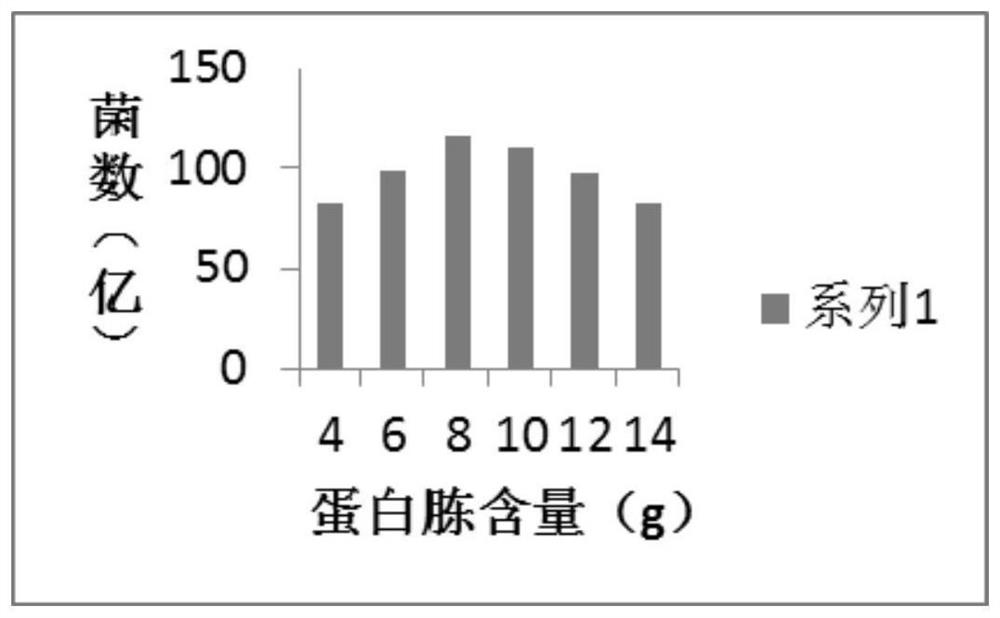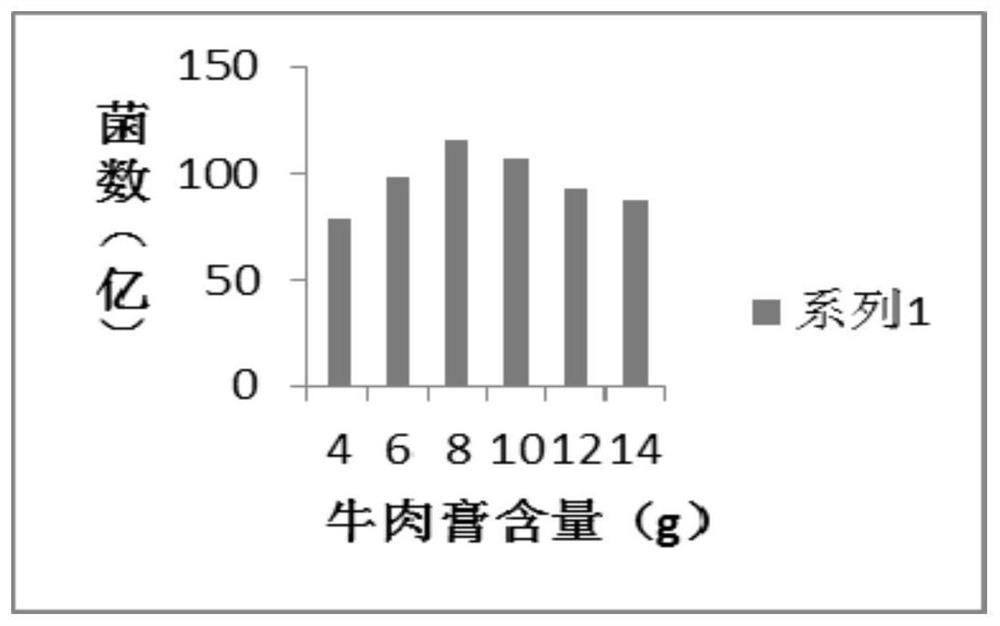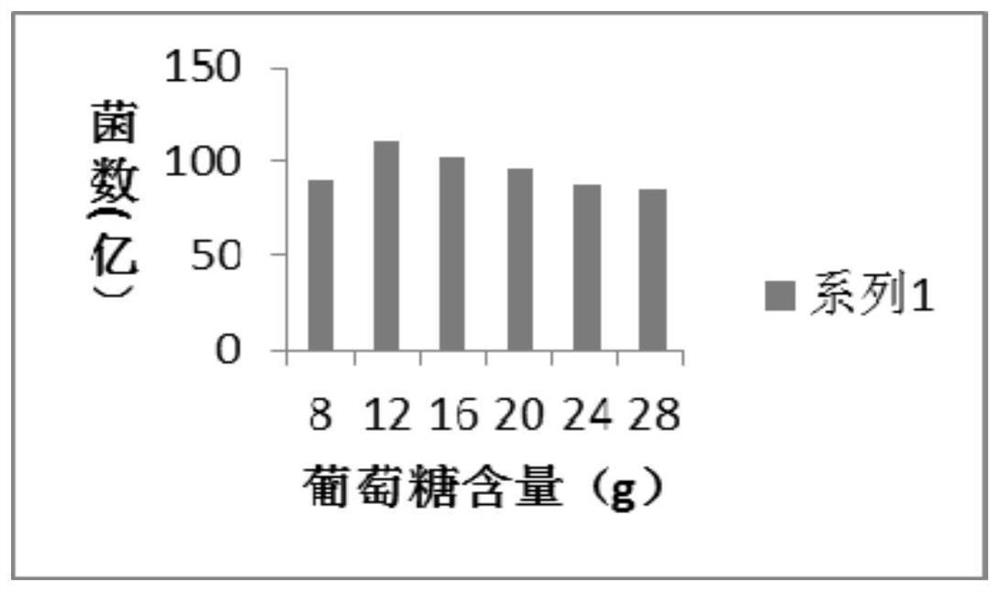Preservation method of lactic acid bacteria
A technology for preservation of lactic acid bacteria and strains, applied in the field of preservation of microorganism strains, can solve the problems of large space occupied by preservation, high frequency of strain variation, unsuitability for lactic acid bacteria, etc., and achieves long storage period, long storage time, and is conducive to the adsorption of microorganisms. effect of cells
- Summary
- Abstract
- Description
- Claims
- Application Information
AI Technical Summary
Problems solved by technology
Method used
Image
Examples
Embodiment 1
[0060] a) Put 25g of cabbagebang granules in a conical flask, sterilize at 121°C for 10 minutes, and cool for later use;
[0061] b) Put the improved MRS medium in a 500mL Erlenmeyer flask, sterilize at 121°C for 15min and cool down for later use;
[0062] c) mixing the sterilized Baicaibang granules in step a) with the sterilized modified MRS medium in step b);
[0063] d) Inoculate Lactobacillus plantarum into the above mixture at an inoculum size of 1% (v / v) under sterile conditions, and culture at 38°C for 1 day;
[0064] e) The above-mentioned cultivated strains are transferred to a sterile centrifuge tube under aseptic conditions and centrifuged at 5000r / min for 10min, discard the supernatant, collect the cabbage gang particles, replace the centrifuge tube with a sterilized gauze plug, and put Dry in a drying oven at 42°C for 2 hours, then transfer to sterile EP tubes, and finally store in refrigerators at 4°C and -18°C respectively.
[0065] The ratio of the improved ...
Embodiment 2
[0067] a) Put 25g of cabbagebang granules in a conical flask, sterilize at 121°C for 10 minutes, and cool for later use;
[0068] b) Put the improved MRS medium in a 500mL Erlenmeyer flask, sterilize at 121°C for 15min and cool down for later use;
[0069] c) mixing the sterilized Baicaibang granules in step a) with the sterilized modified MRS medium in step b);
[0070] d) Inoculate Lactobacillus brevis into the above mixture at an inoculum size of 2% (v / v) under sterile conditions, and culture at 40°C for 1 day;
[0071] e) The above-mentioned cultivated strains are transferred to a sterile centrifuge tube under aseptic conditions and centrifuged at 5000r / min for 10min, discard the supernatant, collect the cabbage gang particles, replace the centrifuge tube with a sterilized gauze plug, and put Dry in a drying oven at 42°C for 2 hours, then transfer to sterile EP tubes, and finally store in refrigerators at 4°C and -18°C respectively.
[0072] The ratio of the improved MRS...
Embodiment 3
[0074] a) Put 25g of cabbagebang granules in a conical flask, sterilize at 121°C for 10 minutes, and cool for later use;
[0075] b) Put the improved MRS medium in a 500mL Erlenmeyer flask, sterilize at 121°C for 15min and cool down for later use;
[0076] c) mixing the sterilized Baicaibang granules in step a) with the sterilized modified MRS medium in step b);
[0077] d) Inoculate Lactobacillus paracasei into the above mixture at an inoculum size of 3% (v / v) under aseptic conditions, and culture at 42°C for 1 day;
[0078] e) The above-mentioned cultivated strains are transferred to a sterile centrifuge tube under aseptic conditions and centrifuged at 5000r / min for 10min, discard the supernatant, collect the cabbage gang particles, replace the centrifuge tube with a sterilized gauze plug, and put Dry in a drying oven at 42°C for 2 hours, then transfer to sterile EP tubes, and finally store in refrigerators at 4°C and -18°C respectively.
[0079] The ratio of the improved ...
PUM
 Login to View More
Login to View More Abstract
Description
Claims
Application Information
 Login to View More
Login to View More - R&D
- Intellectual Property
- Life Sciences
- Materials
- Tech Scout
- Unparalleled Data Quality
- Higher Quality Content
- 60% Fewer Hallucinations
Browse by: Latest US Patents, China's latest patents, Technical Efficacy Thesaurus, Application Domain, Technology Topic, Popular Technical Reports.
© 2025 PatSnap. All rights reserved.Legal|Privacy policy|Modern Slavery Act Transparency Statement|Sitemap|About US| Contact US: help@patsnap.com



